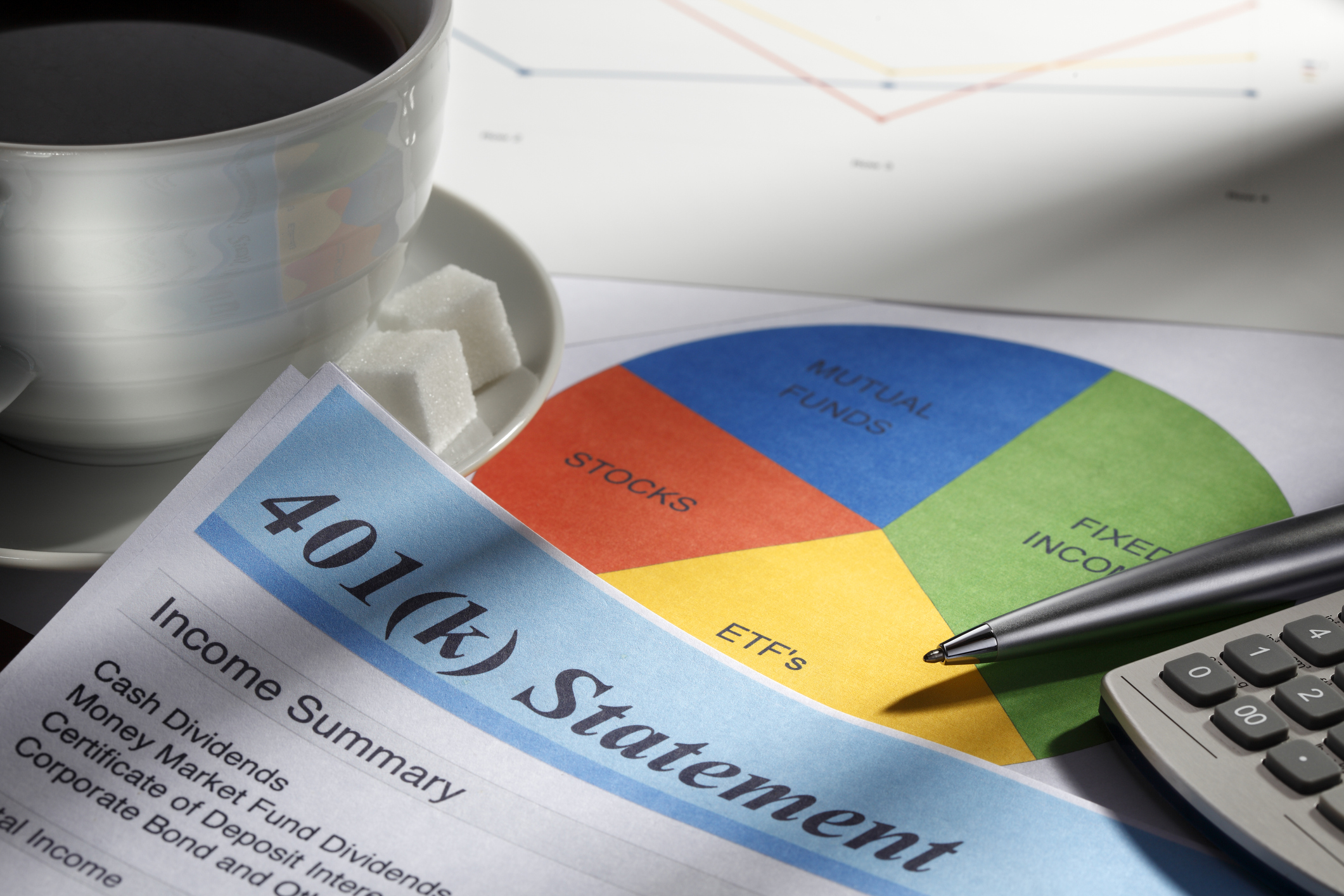How Much Can You Contribute to a 401(k) for 2020?
The 401(k) contribution limit increased by $500 for 2020. Plus, workers 50 and older can also save an extra amount for retirement.

One of the best and most tax-friendly ways to build a nest egg for retirement is by contributing to an employer-sponsored 401(k) account. If your employer offers this benefit, jump in as soon as you can, because it's never too early to start saving for retirement.
>>For more 2020 tax changes, see Tax Changes and Key Amounts for the 2020 Tax Year.<<
401(k) Contribution Limits for 2020
The maximum amount workers can contribute to a 401(k) for 2020 is $500 higher than it was in 2019—it's now up to $19,500 if you're younger than age 50. If you're age 50 and older, you can add an extra $6,500 per year in "catch-up" contributions, bringing your total 401(k) contributions for 2020 to $26,000. Contributions to a 401(k) are generally due by the end of the calendar year.
From just $107.88 $24.99 for Kiplinger Personal Finance
Be a smarter, better informed investor.

Sign up for Kiplinger’s Free Newsletters
Profit and prosper with the best of expert advice on investing, taxes, retirement, personal finance and more - straight to your e-mail.
Profit and prosper with the best of expert advice - straight to your e-mail.
A traditional 401(k) is an employer-based retirement savings account that you fund through payroll deductions before taxes have been taken out. Those contributions lower your taxable income and help cut your tax bill. For example, if your monthly income is $5,000 and you contribute $1,000 of that to your 401(k), only $4,000 of your paycheck will be subject to tax. While the money is in your account, it is sheltered from taxes as it grows.
The money can usually be invested in a variety of stock funds and bond funds. The average 401(k) plan offers 19 funds, and typically nearly half of plan assets are invested in U.S. stock funds and target-date funds, the latter of which can change their asset allocation to become more conservative over time. (See the best funds in 401(k)s for more on where to invest your retirement savings.)
Many employers also match their employees' contributions up to a certain percentage of salary. Some companies even contribute to workers' accounts regardless of whether the employees contribute their own money. On average, companies contributed 5.2% of an employee's pay to the employee's 401(k) account, according to the Plan Sponsor Council of America.
How Much Should You Save for Retirement in a 401(k)?
Stuart Ritter, a certified financial planner with T. Rowe Price, recommends that workers save at least 15% of their income for retirement, including any employer match. If your employer contributes 3%, for example, then you would need to save an additional 12%.
"For people who aren't at 15%, one of the best ways to get there is to increase the amount you are saving by 2% each year until you reach the 15% level," Ritter says. So if you're saving 3% now, bump that up to 5% next year, 7% the year after and so on.
When You Can Withdraw Money From a 401(k)?
You generally must be at least 59 1/2 to withdraw money from your 401(k) without owing a 10% penalty. The early-withdrawal penalty doesn't apply, though, if you are age 55 or older in the year you leave your employer.
Your withdrawals will be subject to ordinary income tax. And once you reach age 72, you'll be obligated to take required minimum distributions. One exception: If you're still working when you hit that age and you don't own 5% or more of the company you're working for, you don't have to take an RMD from the 401(k) that you have through that job.
A Traditional 401(k)s vs. a Roth 401(k)
According to Melissa Brennan, a certified financial planner in Dallas, a 401(k) works best for someone who anticipates being in a lower income tax bracket at retirement than they're in now. For example, someone in the 32% or 35% tax bracket may be able to retire in the 24% bracket. "In that case, it makes sense to save on a pretax basis and defer income taxes until retirement," Brennan says.
Employers have been increasing tax diversification in their retirement plans by adding Roth 401(k)s. These accounts combine features of Roth IRAs and 401(k)s. Contributions go into a Roth 401(k) after you have paid taxes on the money. You can withdraw contributions and earnings tax- and penalty-free if you're at least age 59 1/2 and have owned the account for five years or more. You'll also be required to take minimum distributions from a Roth 401(k) once you turn age 72. However, you might be able to avoid RMDs if you can move the money from a Roth 401(k) into a Roth IRA, which isn't subject to required minimum distributions.
(Note: If you invest in both a 401(k) and a Roth 401(k), the total amount of money you can contribute to both accounts can't exceed the annual limit for your age, either $19,500 or $26,000 for 2020. If you do exceed it, the IRS might hit you with a 6% excessive-contribution penalty.)
401(k) Retirement Savings Tips
Advice for maximizing your 401(k) savings:
- Max out your contributions. For each year that you're able, aim to hit the $19,500 limit.
- Once you turn 50, add another $6,500 to that limit annually while you continue to work.
- If your employer offers to match your contributions up to a certain amount, be sure to invest at least that much in your 401(k) each month. It's free money, after all.
Profit and prosper with the best of Kiplinger's advice on investing, taxes, retirement, personal finance and much more. Delivered daily. Enter your email in the box and click Sign Me Up.
-
 457 Plan Contribution Limits for 2025
457 Plan Contribution Limits for 2025Retirement plans There are higher 457 plan contribution limits for state and local government workers in 2025. That's good news for state and local government employees.
-
 Medicare Basics: 12 Things You Need to Know
Medicare Basics: 12 Things You Need to KnowMedicare There's Medicare Part A, Part B, Part D, Medigap plans, Medicare Advantage plans and so on. We sort out the confusion about signing up for Medicare — and much more.
-
 The Seven Worst Assets to Leave Your Kids or Grandkids
The Seven Worst Assets to Leave Your Kids or Grandkidsinheritance Leaving these assets to your loved ones may be more trouble than it’s worth. Here's how to avoid adding to their grief after you're gone.
-
 SEP IRA Contribution Limits for 2025
SEP IRA Contribution Limits for 2025SEP IRA A good option for small business owners, SEP IRAs allow individual annual contributions of as much as $70,000 in 2025, up from $69,000 in 2024.
-
 Roth IRA Contribution Limits for 2026
Roth IRA Contribution Limits for 2026Roth IRAs Roth IRAs allow you to save for retirement with after-tax dollars while you're working, and then withdraw those contributions and earnings tax-free when you retire. Here's a look at 2026 limits and income-based phaseouts.
-
 SIMPLE IRA Contribution Limits for 2026
SIMPLE IRA Contribution Limits for 2026simple IRA For 2026, the SIMPLE IRA contribution limit rises to $17,000, with a $4,000 catch-up for those 50 and over, totaling $21,000.
-
 457 Contribution Limits for 2024
457 Contribution Limits for 2024retirement plans State and local government workers can contribute more to their 457 plans in 2024 than in 2023.
-
 Roth 401(k) Contribution Limits for 2026
Roth 401(k) Contribution Limits for 2026retirement plans The Roth 401(k) contribution limit for 2026 increased, and workers who are 50 and older can save even more.

